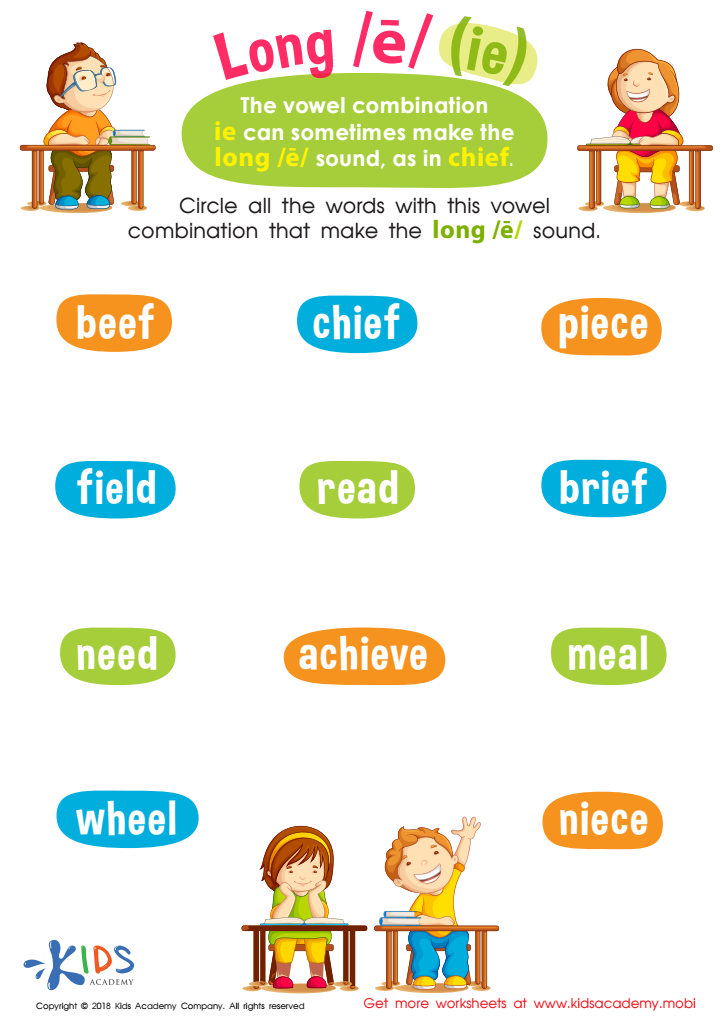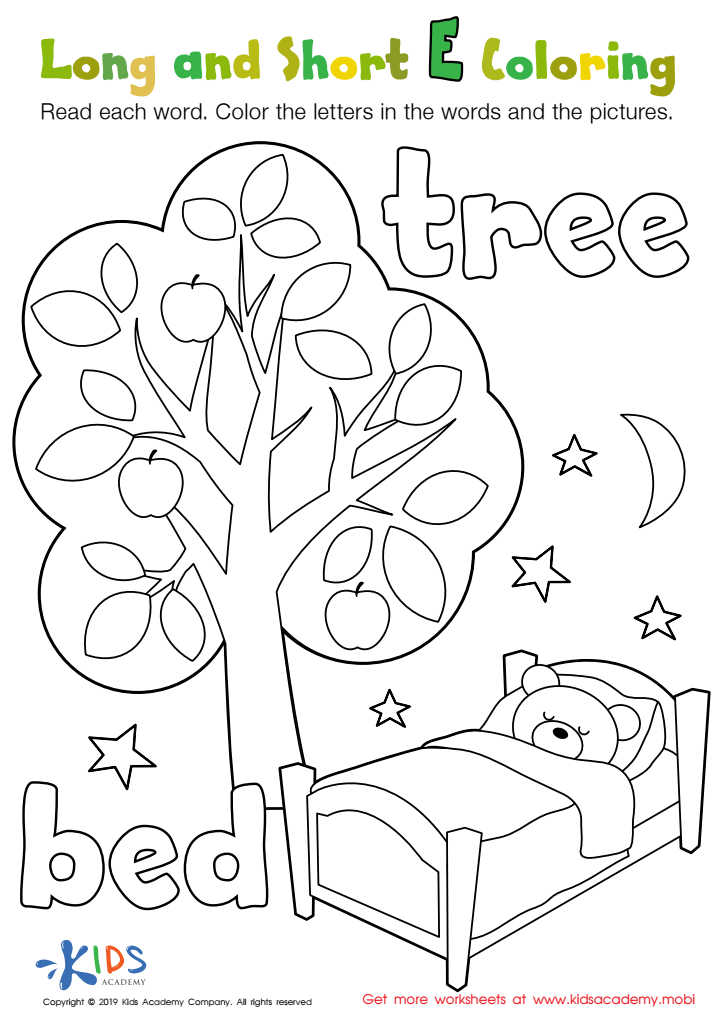Reading comprehension Normal Vowel Blends Worksheets for Ages 4-7
7 filtered results
-
From - To
Explore our engaging "Reading Comprehension Normal Vowel Blends Worksheets" designed specifically for children ages 4-7. These worksheets focus on developing essential reading skills through fun, interactive activities centered around normal vowel blends. Each worksheet encourages young learners to decode words and improve their reading comprehension abilities while enhancing phonetic awareness. Crafted with age-appropriate language and vibrant illustrations, these resources make learning an enjoyable experience. Parents and educators can easily incorporate these worksheets into daily lessons, helping children gain confidence in reading. Start nurturing a love for reading with our captivating vowel blend worksheets today!


Reading: Long E and IE Worksheet


short vowels Worksheet


Reading: OA or OW Worksheet


Vowel Diphthongs OI OY Worksheet


Reading: AW and AU Words Worksheet


Reading: EA as in Bread Worksheet


Long and Short E Worksheet
Parents and teachers should prioritize reading comprehension, particularly with normal vowel blends, for children aged 4-7 because this foundation is critical for literacy development. At this age, children are just beginning to decode letters and sounds, making it essential to help them understand how vowel blends work, such as "ai" in "rain" or "ou" in "house." These blends are common patterns in English and contribute to successful reading fluency.
Strong reading comprehension skills foster a love for reading and improve overall academic performance. When children can decode and comprehend effectively, they gain confidence and motivation to engage with texts, stimulating their imagination and curiosity. This skill set also enhances their ability to participate in conversations, express thoughts, and develop critical thinking abilities.
Moreover, early mastery of reading comprehension helps set the stage for future learning. It combats the risk of reading difficulties later on, ensuring that children build a solid base for more complex texts. Supporting children’s understanding of normal vowel blends promotes an interactive learning environment, where parents and teachers can encourage discussion, creativity, and an appreciation for language, laying the groundwork for lifelong literacy. Prioritizing these skills ultimately helps children become engaged and successful readers.
 Assign to My Students
Assign to My Students












